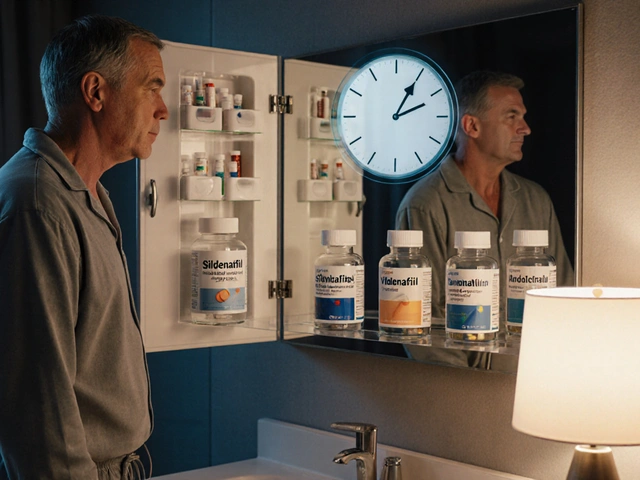Eating disorders: signs, help, and what to do now
Most people think eating disorders are just about food. They're not. They involve thoughts, emotions, and body-image issues that steal time, energy, and health. This page gives clear, practical steps to spot common warning signs, start a conversation, and find treatment without overwhelm.
Spotting the signs
Look for sudden weight loss or gain, strict rules about eating, secretive behavior around meals, frequent trips to the bathroom after eating, or extreme exercise. Notice mood swings, loss of interest in hobbies, dizziness, or trouble concentrating. Teens and young adults often hide symptoms; parents and friends should watch for changes in routine or new social withdrawal.
How to help someone now
Start a calm, non-judging conversation. Use "I" statements: "I’m worried because you seem tired and you’ve stopped eating with us." Offer specific support: help find a doctor, join them at an appointment, or call a crisis line together. Don't argue about food or weight. Avoid blaming or giving quick fixes like "just eat more." Listening and staying connected matter more than perfect words.
Treatment usually involves a team: a primary care doctor, a mental health therapist, and a registered dietitian. Therapies like CBT (cognitive behavioral therapy) and family-based therapy have strong evidence for helping people recover. Medications can help with mood or anxiety that fuel disordered eating, though they are rarely the only treatment. A nutrition plan focuses on restoring regular meals and balanced eating, not dieting.
If medical problems appear—fainting, chest pain, severe dehydration, or very fast or slow heartbeat—seek emergency care. Low potassium or electrolyte imbalance can be life-threatening. If someone expresses thoughts about self-harm or suicide, call local emergency services or a suicide prevention hotline immediately.
Insurance and cost can feel like big barriers. Ask clinics about sliding-scale fees, community health centers, or university training clinics with supervised students. Telehealth can expand options, especially in areas with few specialists. Peer support groups and reputable online programs can add help between sessions, but avoid unregulated "pro-ana" spaces that encourage harm.
Family members should set boundaries around enabling behaviors while offering steady emotional support. Focus on meals, safety, and daily routines rather than weight. Celebrate small wins like a full meal, an attended appointment, or an honest conversation. Recovery takes time, and setbacks happen without meaning failure.
Want a quick next step? If you’re worried about yourself, make one call to your primary care doctor or a local mental health clinic this week. If you’re worried about someone else, tell them you care and offer to help with an appointment or search for local resources. Small actions often start big changes.
Professionals and teachers: watch for pattern changes in attendance, schoolwork, and social ties. Early referral to a pediatrician or school counselor can make treatment smoother. Employers can offer flexible scheduling for appointments and avoid commenting on appearance. Recovery is a gradual process—weekly small steps pile up. Keep a list of local therapists, dietitians, and support groups so you can share resources when someone asks.
Recovery is possible and real.




